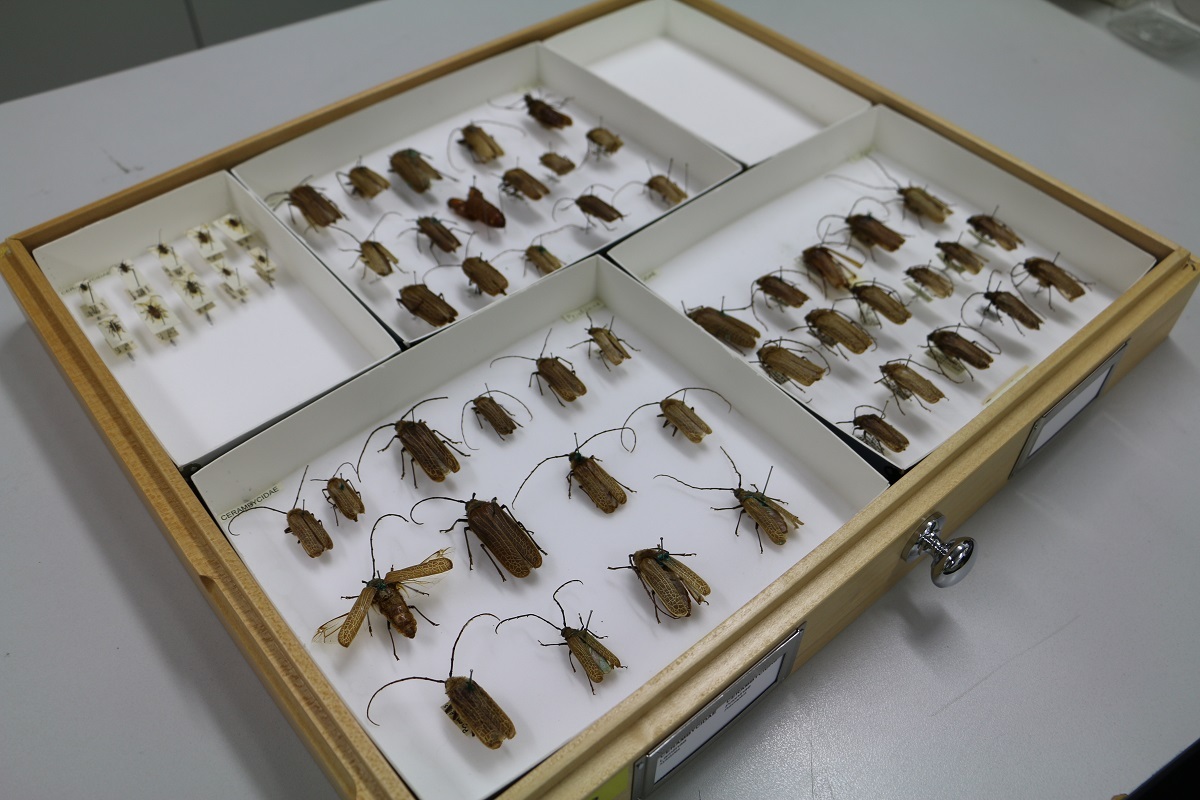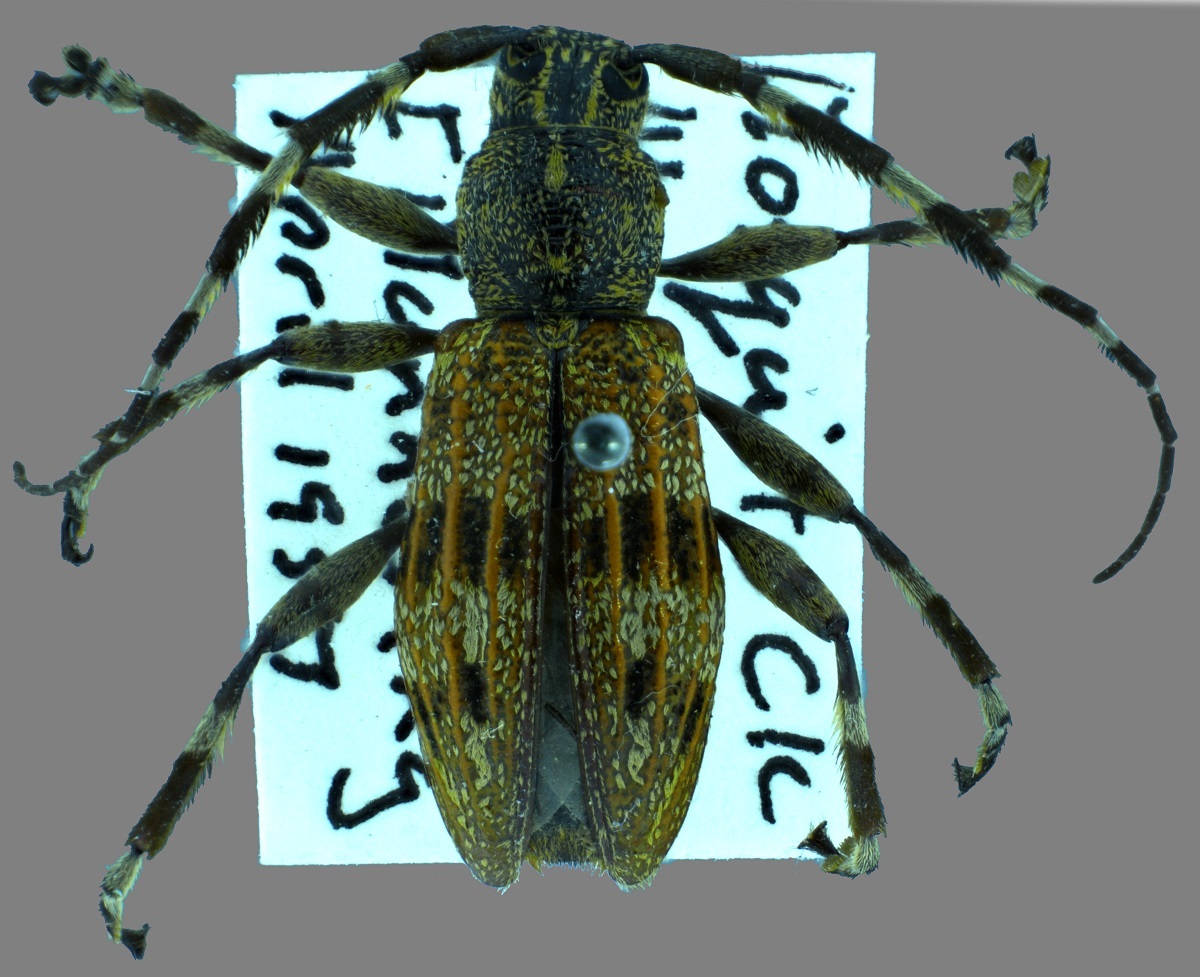The huhu beetle Prionoplus reticularis is one of New Zealand’s heaviest beetles. The beetle's larvae, commonly known as huhu grubs, are considered a tasty treat by some New Zealanders – they're said to taste like peanut butter. Huhu beetles are common and Canterbury Museum holds many specimens in its insect collection.

Huhu beetles are part of the family Cerambycidae, which are commonly known as longhorn beetles. Longhorn beetles got their name because they have really long antennae, which are typically at least half the length of an adult beetle’s body. New Zealand has 180 species of longhorn beetle, with many more still to be described.
A particularly interesting longhorn beetle species is Hexatricha pulverulenta, the squeaking longhorn beetle.
Hexatricha pulverulenta is the only species in the genus Hexatricha and is endemic to New Zealand (found nowhere else in the world). True to their common name, the beetles make a squeaking noise indicating irritation when handled. The squeaking noise is known as stridulation, which occurs when the beetle moves its thorax vigorously. It probably developed as a response to predation pressure, to deter birds or introduced mammals trying to make a tasty snack out of them.
English entomologist John O Westwood described Hexatricha pulverulenta in 1843, based on specimens given to him by Captain Frederick John Parry who was exploring New Zealand at the time. The beetles live under dead or dying tree bark, most commonly Pinus radiata and New Zealand beech trees. Female beetles lay their eggs in wood, where the eggs hatch and live as larvae for between 2 to 3 years.






